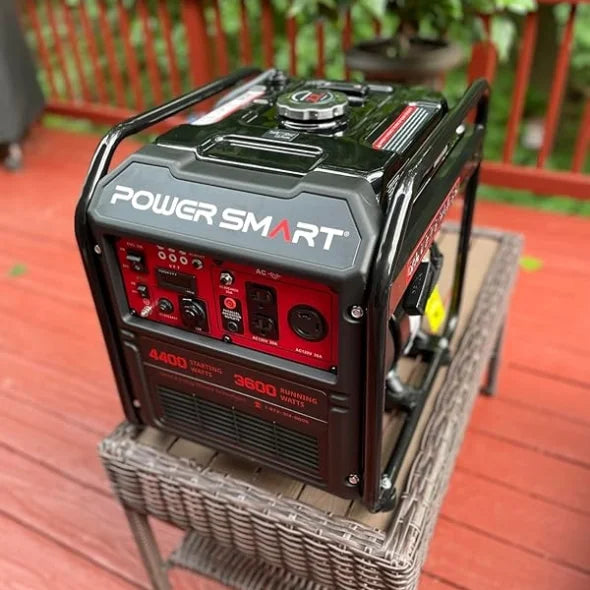Gas generators are irreplaceable for businesses and homeowners who need uninterrupted power, especially during outages or while working in remote areas. Whether one uses a generator for home backup, outdoor events, or even at construction sites, it is always important to keep the machines in perfect running condition to achieve reliability and safety. Routine maintenance prevents high-cost repairs, improves performance, and prolongs the life span of your generator.
Why Gas Generator Maintenance is so Important
These are intricately designed pieces of equipment that compose several parts with one end-the generation and providing of power. Just like with all mechanical pieces of equipment, periodic maintenance also applies. Failure to go by the routine normally leads to complete failures, making repair quite costly, posing even safety threats like carbon monoxide poisoning-which necessitates an understanding of the right practice in regard to the upkeep of such generators.
Tip 1: Regular Oil Change
Perhaps the most basic maintenance of the gas generator is changing or assuring the engine oil is clean and at an appropriate level.Oil lubricates the engine by lessening friction and helping to prevent overheating. Over time, oil breaks down, and contaminants can accumulate, causing engine parts to wear down faster.
The oil is usually changed every50 to 100 hours of use or every six months at least, depending on frequency.The PowerSmart HB5035 Inverter Generator, for example, demands a 4-stroke OHV engine, and to keep it running smoothly, high-quality 10W-30 motor oil is used.
According to research by the U.S. Department of Energy, regular oil changes can increase fuel efficiency in the generator by up to20% and lower operation costs over time.
Tip 2: Keep the Fuel System Clean
The most common reasons for generator failure start with fuel-related problems. Old or contaminated fuel will varnish and clog fuel lines and injectors, making it difficult for the engine to run or start. Stale fuel also increases the risk of corrosion in the fuel system.
To maintain your generator's fuel system:
Employ fresh, quality fuel. If you plan not to use your electrical generator for much time, drain the tank and fuel line to prevent any blockage of the fuel flowing.
Use fuel stabilizer if you will have stored the electrical generator beyond a period of 30 days. The fuel will get spoiled, causing difficulty in startups.
Clean the fuel filter at regular intervals; especially after long usage periods.
For example, the PowerSmart 4450W Open Frame Inverter Generator (MB5040C) has an advanced fuel system that ensures combustion is efficient to help decrease fuel consumption. For this system to work effectively, always use clean and ethanol-free fuel for the best results.
Tip 3: Regular Check on Air Filter
It prevents dirt, debris, and contaminants from entering the engine. Over time, this filter becomes clogged with dust and dirt, constricting airflow to the engine and making it less efficient in its operation. A dirty air filter simply means poor combustion, which results in consumption of more fuel by the generator at the expense of the produced power.
Engine experts recommend checking the air filter every 50 hours of use or at the start of each season. Clean it if it is dirty and replace it if it's damaged or too clogged. This is very true for gas generators operating in dusty or outdoor conditions, such as PowerSmart's 4800W Inverter Generator, model HB5046C, which is good for construction sites or outdoor events.
Tip 4: Periodically Check the Spark Plug
The spark plug is used to ignite the fuel mixture inside the engine. When it is defective or worn out, the engine might misfire, run rough, or not start at all. Periodical checking of the spark plug will ensure smooth running.
Inspect your spark plug after every 100 operating hours. It should be either cleaned or changed as needed. Once worn, corroded, or if one with serious carbon has been installed previously, a replacement is due immediately. A fine clean spark plug will ensure the ignition starting smoothly and the smooth, efficient operation of the running engine.
For instance, the PowerSmart HB5035 Inverter Generator is designed such that the spark plug service is easy access, whereby it is easy for one to conveniently reach and replace the plug without much hustle.
Tip 5: Check the Battery (For Electric Start Generators)
Generators with electric start features, like PowerSmart's HB5035 or4450W MB5040C, require a battery to start the engine. Over time, a battery will discharge or wear out and may not be able to start the generator.
To maintain your electric-start generator for optimal performance:
Check the voltage of the battery from time to time. If the voltage falls below the minimum required by the manufacturer, that is the time to recharge or replace the battery.
Clean the battery terminals. Corrosion can lead to bad connections that may negatively impact the generator's starting capacity.
The battery will require regular charging, especially if the generator is rarely put into operation, because over time, batteries have a tendency to lose their charge.
Tip 6: Proper Storage of Generator
Therefore, storage during their not being in use will highly impact the service life of components and readiness if there's any sudden need for one.PowerSmart gas generators represented by themodels HB5035 and MB5040C happen to be space-saving but do need maintenance, lest rust or deterioration of fuel may set in.
Some Storage Tips:
Empty the fuel tank if you’re storing the generator for more than a month. This prevents fuel from going stale and clogging the carburetor or fuel lines.
Clean the generator thoroughly before storing it. This removes dirt and debris that could damage the generator or cause corrosion.
Store the generator in a dry, cool place. Being exposed to moisture or high temperatures will surely damage the sensitive parts like the battery and electrical system.
The good storing practice means your generator will be ready when you need it most and not after a series of delays or issues caused by your negligence.
Tip 7: Keep Watch on Exhaust and CO Levels for Safety
One major safety concern with gas generators is the danger ofcarbon monoxide poisoning.Carbon monoxide (CO) is a colorless, odorless gas. It may build up if the generator is used indoors, in an unventilated garage, or near windows, doors, and vents.
To reduce CO risks:
Always operate your generator outdoors in a well-ventilated area, away from any structures or open windows.
Employ CO detection alarms when generators are operated near confined spaces.
The PowerSmart series MB5040C andHB5046C inverter generators have added protection in the case of detected carbon monoxide with their CO Alert safety features.
Conclusion: Maximizing Your Generator’s Longevity
PowerSmart has been long into the manufacturing of different models for gas generators in view of their reliability, efficiency, and ease of maintenance. Among its products, one can notice HB5035, MB5040C, andHB5046C-all featuring advanced features of CO Alert safety, fuel efficiency, and quiet operation that find a perfect fit in both domestic and commercial uses.
It means a proper model selected for your business operation will keep the power supply constant and reduce the overall production downtime. You can get more on the series of gas generators by PowerSmart through logging onto their official website or through their customer help desk.







Leave a comment
All comments are moderated before being published.
This site is protected by hCaptcha and the hCaptcha Privacy Policy and Terms of Service apply.